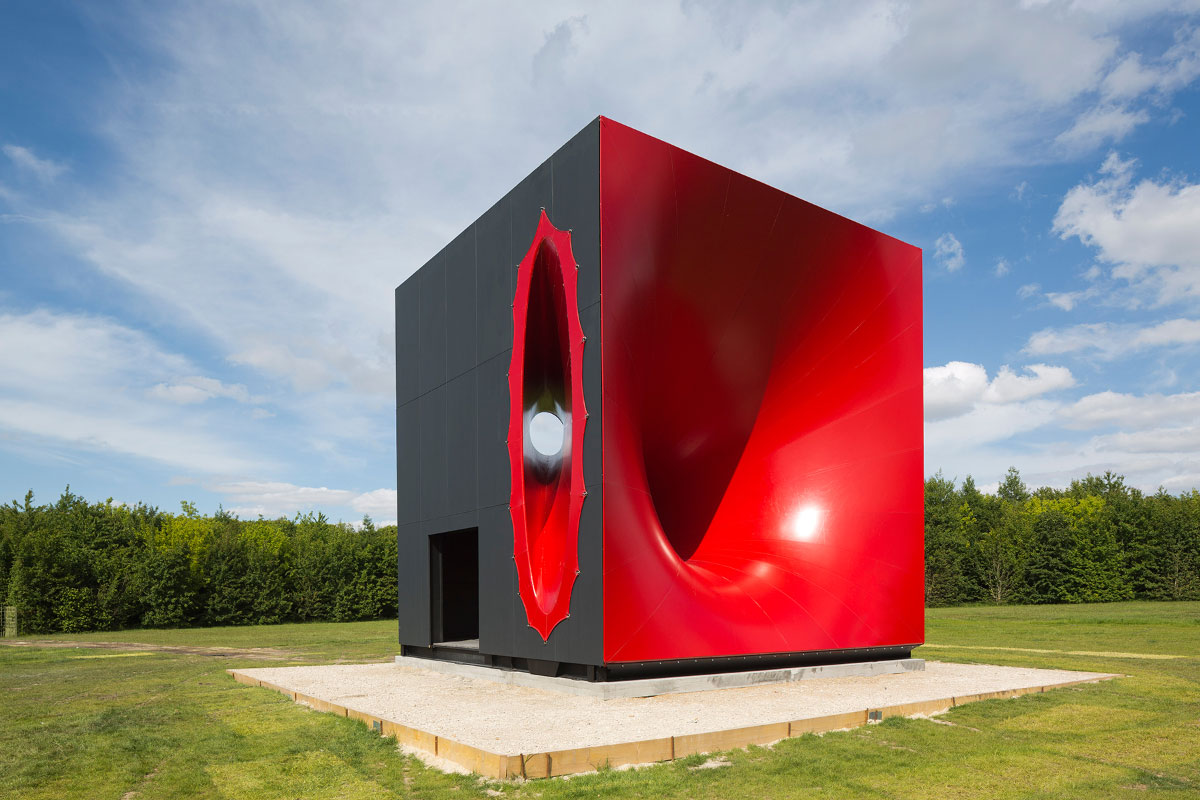PRESENTATION: Anish Kapoor
 Anish Kapoor combines Eastern heritage with Western influence and as a result makes truly international art, most famous for public sculptures that are both adventures in form and feats of engineering, Anish Kapoor manoeuvres between vastly different scales, across numerous series of work. Forms turn themselves inside out, and materials are not painted but impregnated with color, as if to negate the idea of an outer surface, inviting the viewer to the inner reaches of the imagination.
Anish Kapoor combines Eastern heritage with Western influence and as a result makes truly international art, most famous for public sculptures that are both adventures in form and feats of engineering, Anish Kapoor manoeuvres between vastly different scales, across numerous series of work. Forms turn themselves inside out, and materials are not painted but impregnated with color, as if to negate the idea of an outer surface, inviting the viewer to the inner reaches of the imagination.
By Dimitris Lempesis
Photo: Skulpturenpark Waldfrieden Archive
Among other recent works, Anish Kapoors solo exhibition at Skulpturenpark Waldfrieden features his architecturally scaled sculpture from “Sectional Body preparing for Monadic Singularity” (2015). A work that sits within Kapoor’s iconic and immersive language of color and displacement of boundaries between interior and exterior and signals the centrality of the body to the works on show. It is a sculpture that signaled a period of renewed intensity in Kapoor’s painting practice, and at Wuppertal is exhibited alongside recent works that sit on the cusp between painting and sculpture, and in intimate dialogue with the primal imagery that has emerged in his recent paintings on canvas. In this exhibition the fluidity of paint becomes metaphor for all that is liquid/unstable within us; in a series of containments it is presented in congealed form, be it wrapped in gauze, held within vessel like trays or suspended from steel structures. These are works that feel like the aftermath of some ritualistic action, where the canvas has eviscerated into contents into sculptural form. Born to a Hindu father and a Jewish mother from Baghdad, Anish Kapoor had an Indian- Jewish upbringing. He was educated in the prestigious all- boys boarding school, The Doon School in Dehradun, India and in 1971 moved to Israel to live in a kibbutz. He later began his study in electrical engineering and after finding out that the discipline is not for him, he quit after 6 months. While in Israel he decided to become an artist, he soon moved to Great Britain to attend Hornsey College of Art (1973-77) and Chelsea School of Art and Design (1977-78). He went on to teach at Wolverhampton Polytechnic in 1979 and in 1982 was Artist in Residence at the Walker Art Gallery in Liverpool. After attending Chelsea School of Art for postgraduate studies, Kapoor quit after one year. Unsure where his art career would lead, he traveled back to India. His trip to India inspired a three-year period of creativity and lead to the creation of his first major works – his ritualistic pigment sculptures. Because of the material, people initially thought Kapoor was a female artist. In spite of this confusion, he quickly gained recognition within the international art community. Nicholas Logsdail, the owner of Lisson Gallery in London soon took notice of Kapoor’s work. During the early 1980s, Logsdail was gathering together a diverse selection of British sculptors, to later become known as the New British Sculptors, and he wanted Kapoor to be part of the group. With his reputation as a serious artist now secure, Kapoor represented Britain in the 1990 Venice Biennale, and won the prestigious Turner Prize in 1991. Kapoor found affinity in his use of traditional earthy materials and tendencies towards spiritual expression, with Logsdail’s vision of the New British Sculptors. The loosely formed group included Julian Opie, Antony Gormley, Richard Deacon, Tony Cragg, and Rachel Whiteread, and provided a network of equals with whom Kapoor could exhibit and share ideas. At the same time Kapoor found artistic success, he also found personal fulfillment. In 1995, he married the German-born art historian, Susanne Spicale, while also finally resolving his psychological issues. Crediting psychoanalysis with allowing him to explore his inner mind and process, Kapoor attributes the therapy to a better understanding of his art. From the mid-90s onwards he expanded his use of materials to include polished stainless steel, and then later red wax, and water. More recently, in last two decades, the artist’s works are often colossal and site-specific. In 2014, Kapoor obtained the exclusive rights to Vantablack, making him the only person in the world who could paint using this extremely deep shade of black. The concept of exclusivity surrounding a color seemed ridiculous and caused outrage amongst artists. As English painter, Christian Furr, explained of the controversy, “I’ve never heard of an artist monopolizing a material. Using pure black in an artwork grounds it. All the best artists have had a thing for pure black – Turner, Manet, Goya. This black is like dynamite in the art world.” In retaliation, contemporary British artist, Stuart Semple created the “world’s pinkest pink” and banned Kapoor from using it. And while he allows others to use the pigment, they must first agree to a legal declaration stating they are not Kapoor. Further escalating the feud, Kapoor posted a picture on social media of his middle finger dipped in the pink pigment and included the caption: “Up yours #pink”. Of course, despite these public escapades, Kapoor continues to produce work at a prolific rate, working from his studio in his home city of London.
Photo: Anis Kapoor, Sectional Body preparing for Monadic Singularity, 2015, Photo: Fabrice Seixas, © Anish Kapoor, VG BildKunst
Info: Skulpturenpark Waldfrieden, Hirschstraße 12z, Wuppertal, Germany, Duration: 13/8/2022-1/1/2023, Days & Hours: Tue-Sun 11:00-18:00, https://skulpturenpark-waldfrieden.de/






